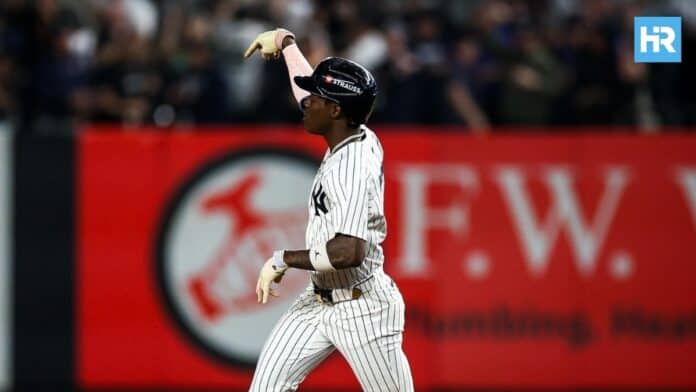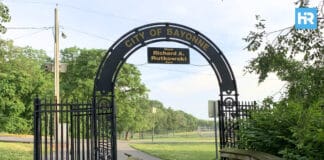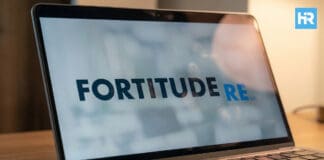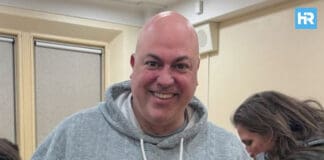The New York Yankees, a team that prides itself on legacy and dominance, find themselves in an uncharacteristic tangle of unresolved questions surrounding their infield as they prepare for the 2025 MLB season.
It is rare to see this franchise, often synonymous with control and precision, fumbling to patch holes in its roster, especially in a position as critical as third base.
Yet, much of this current instability is the fallout of what could only be described as a collision of egos and miscalculations during last year’s trade deadline.
- Gleyber Torres didn’t want to play third base after Jazz Chisholm Jr. joined the Yankees, which caused problems and led to Torres being traded to the Detroit Tigers.
- The Yankees struggle to figure out who will play third base, with options like DJ LeMahieu, Oswald Peraza, and Oswaldo Cabrera, but none seem like the perfect choice.
- The team is considering trading for Nolan Arenado, a talented third baseman, but his age, high salary, and recent drop in performance make it a big risk.
Torres: The Stubborn Superstar
The controversy begins with Gleyber Torres.
Once seen as a cornerstone of the Yankees’ future, Torres became an emblem of defiance when he refused to switch from second base to third after the Yankees acquired Jazz Chisholm Jr. at the 2024 trade deadline.
What might have been a simple adjustment for the team’s greater good turned into a public relations debacle that still casts a shadow over the Yankees today.
When recalling the events during a recent appearance on YES Network’s Yankees Hot Stove, Yankees General Manager Brian Cashman did not mince words.
According to Cashman, the organization had planned to bring in Chisholm as a second baseman while moving Torres to third to better align the team’s infield dynamics.
However, things did not play out so smoothly.
“When I acquired Jazz, I acquired Jazz to be our second baseman and move Gleyber [Torres] to third the rest of last year,” Cashman explained.
“[Manager Aaron Boone] wanted to do it the other way. He moved Jazz to third after we got him and kept Gleyber [Torres] at second because Gleyber didn’t want to move to third and was unwilling.”
That word—“unwilling”—is a strong one.
For a player like Torres, who had once been praised for his flexibility and offensive skill, his refusal to switch positions revealed a stubborn streak that didn’t sit well with the Yankees or their fans.
Torres, nevertheless, didn’t seem the least bit regretful.
He responded to Cashman’s comments with a short, almost dismissive post on social media: “Still? just turn.”
The brief message shows the tension between Torres and the Yankees, leaving fans and analysts wondering if the team was right to let him go or if they could have handled things differently.
Jazz Chisholm’s Baptism by Fire at Third Base
Caught in the aftermath of Torres’ defiance was Jazz Chisholm Jr., who found himself thrust into a role for which he had no prior experience.
Despite being acquired to play second base, Chisholm was forced to take over at third—a position completely foreign to him—because Torres had dug in his heels.
In what can only be described as trial by fire, Chisholm managed to hold his own, impressing just enough to quell the immediate panic over the infield reshuffle.
“Jazz wound up getting baptized at a position he never had played, played it well enough, and now gives us a little more flexibility entering the ’25 year,” Cashman said, a comment that seems equal parts praise and tempered relief.
Chisholm’s adaptation was commendable, but it is hard to ignore the fact he never intended to be a long-term solution at third base.
While his athleticism and quick learning curve helped patch things up for the remainder of the 2024 season, the Yankees now face whether to keep Chisholm at third base or move him back to his natural position at second base.
Cashman and Manager Aaron Boone are left juggling multiple players capable of filling gaps but none who seem like definitive solutions.
The Search for Infield Stability
If Chisholm isn’t the long-term solution, who is? The Yankees have a few options, but none of them seem like the perfect answer.
DJ LeMahieu, Oswald Peraza, and Oswaldo Cabrera are all considered potential contributors at either second or third base, but the team’s confidence in these options feels shaky at best.
LeMahieu, for all his experience and accolades, appears to be a shadow of his former self.
Once a two-time batting champion, his offensive production has dipped noticeably over the past two seasons, largely due to injuries.
While his defense remains reliable, the Yankees cannot afford to rely on him as their primary answer at third base if his bat continues to underperform.
On the other hand, Peraza is an exciting young talent whose defensive skills make him an intriguing option.
However, his inconsistency at the plate raises concerns about his readiness for an everyday role.
Similarly, Cabrera offers versatility as a switch-hitter and utility player, but he, too, has struggled to establish himself as a consistent offensive presence.
Cashman seemed resigned to the idea of experimentation when he commented, “I do think we can have one of these candidates emerge or multiple guys emerge into a platoon situation at worst, or a solo shot at best, and if not, there’s also the marketplace to play around with as we move forward.”
This statement, though practical, highlights the team’s lack of a clear and confident plan for the infield heading into spring training.
The Nolan Arenado Trade Rumors
Amid the uncertainty, the Yankees are reportedly in serious pursuit of a blockbuster trade for Nolan Arenado, the veteran third baseman of the St. Louis Cardinals.
He is one of the most decorated players in the game, with eight All-Star appearances and ten Gold Gloves—the kind of player who could bring stability and leadership to a Yankees infield that sorely needs both.
But—and this is a big but—Arenado isn’t the player he was five years ago.
At 34 years old, his offensive production has started to dip, though his defensive skills remain elite.
The Yankees, who are already juggling financial commitments, would have to take on Arenado’s significant contract.
And they’re not the only team interested; the Boston Red Sox and Los Angeles Dodgers are also reportedly in the mix.
For the Yankees, a trade for Arenado would be both a solution and a gamble.
It could stabilize their infield, but at what cost?
And if the trade doesn’t happen, what then?
The Yankees are left with an infield built on “what ifs,” a dangerous foundation for a team with championship aspirations.
Strong Offseason Moves Can’t Fix the Infield
The Yankees find themselves in an unfamiliar position of vulnerability. They’re working to address last year’s fallout while piecing together an infield that can carry them through the 2025 season.
With Torres gone, Chisholm adjusting, and the chase for Arenado ongoing, the team’s future is far from clear.
The Yankees have made strong offseason moves to strengthen other areas of their roster, including the additions of Cody Bellinger and Paul Goldschmidt to boost their offense and the re-signing of reliever Tim Hill on a one-year, $2.5 million deal to stabilize the bullpen.
That said, these acquisitions alone cannot mask the glaring question marks in the infield.
As spring training approaches, the Yankees face mounting pressure to find answers.
Whether they can rally behind internal options like LeMahieu, Peraza, and Cabrera or swing big with a blockbuster trade for Arenado remains to be seen.
For now, this isn’t the dominant and self-assured Yankees team fans have come to expect.
Instead, it’s a squad wrestling with questions of identity and direction in a league that offers no easy answers.






